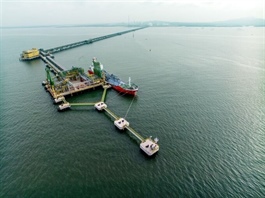Private sector reaps rewards of pro-business resolutions in 2025
Private sector reaps rewards of pro-business resolutions in 2025
July and the preceding six months of 2025 saw a record wave of new and returning businesses, underscoring the momentum of Vietnam’s private sector. Phi Huong Nga, head of the Department of Industry and Construction Statistics at the National Statistics Office, discusses how supportive policies are translating into real results.
|
With business entries outpacing exits for the first seven months of the year, is this real economic momentum or just a short-term rebound?
Indeed, the number of businesses entering the market has outpaced those exiting – reaching a record level over the first seven months.
This milestone is closely linked to the sustained recovery in industrial production.
In July alone, the index of industrial production (IIP) rose by 8.5 per cent on-year – particularly significant given the strong base from July 2024, which had already seen growth surpassing 11 per cent.
This July also marked the first month following the administrative merger of provinces and cities. Localities with substantial industrial capacity recorded robust IIP gains compared to June, such as Vinh Long, which saw its IIP rise 4.5 per cent, with Quang Ngai up 3.7 per cent, Dong Nai up 3.5 per cent, and Ho Chi Minh City up 3.4 per cent.
Thanks to this momentum, industrial output for the January to July period grew 8.6 per cent overall. Manufacturing and processing industries saw a 10.3 per cent increase, improving upon the 9.6 per cent growth in the same period last year.
Of the 16 key industrial sectors, only crude oil and natural gas extraction continued to decline. The pharmaceutical, chemical, and herbal medicine sector also posted a 4.9 per cent contraction. All other sectors recorded growth – many even growing impressively.
For instance, food processing was up 10 per cent, garment production rose 14.5 per cent, leather and related products jumped 15.4 per cent, and rubber and plastic products grew nearly 17 per cent.
Motor vehicle production surged nearly 30 per cent, while television manufacturing climbed more than 21 per cent.
107,700 new businesses were registered and 66,300 enterprises resumed operations for the same period, bringing the total number of new and returning firms to a record high of around 174,000 – a 23 per cent jump on-year. Meanwhile, 144,400 businesses exited the market, resulting in a net increase of 29,600 active enterprises – a reversal from previous years when exits often outnumbered entries.
Is the current startup wave a clear outcome of policies to boost private sector growth?
Recent months have seen an unprecedented surge in entrepreneurial activity, with soaring confidence and momentum among businesses and individual entrepreneurs.
This is clearly the result of a series of policy breakthroughs, including Resolution No.68-NQ/TW on private sector development; Resolution No.198/2025/QH15 outlining specific mechanisms to advance the private economy; and Resolutions No.138/NQ-CP and 139/NQ-CP, which implement Party and National Assembly directives that position the private sector as a key driver of socioeconomic development.
The strong startup wave across the business community and among household businesses signals that policies to support the private sector are no longer just theoretical – they are now taking hold across the economy, sparking a vibrant entrepreneurial spirit among local citizens.
Despite the surge in new and returning firms, a substantial number of businesses have still exited the market. How do you view this?
Yes, as I said earlier, from January to July, approximately 144,400 businesses left the market. While this figure raises concerns about the underlying health of the economy, it’s worth noting that 88,600 of these – about 61 per cent – merely temporarily suspended operations, primarily for business restructuring.
The high number of closures reflects the ongoing fragility, particularly for small and micro businesses. Despite progress in improving the business environment, numerous obstacles remain, including still cumbersome administrative procedures, limited access to credit, and high operating costs, among others. These burdens continue to weigh on business resilience.
On a more optimistic note, the fact that 61 per cent of firms are only temporarily inactive suggests a cautious outlook rather than permanent closure. Many business owners are pausing operations strategically, waiting for market conditions to improve or clearer growth opportunities to emerge before re-entering the market.
Still, the elevated levels of dissolution and suspension highlight deeper structural issues – both in the internal capabilities of the business sector and in the regulatory environment. These should be acknowledged seriously to devise timely and effective responses.
- 17:47 18/08/2025




























